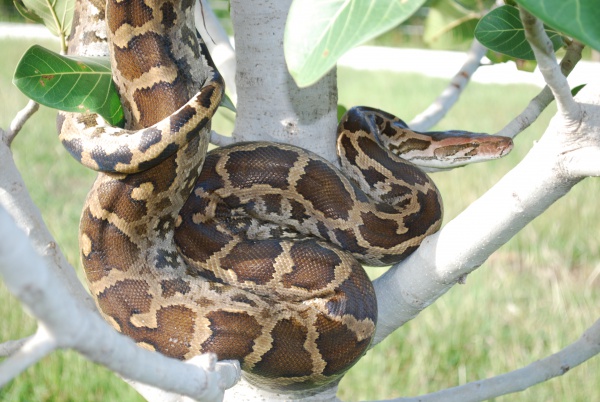Facts About Indian Python
The Python molurus, commonly known as the Indian python, is a large, nonvenomous snake native to the Indian subcontinent and Southeast Asia. It is also referred to as the black-tailed python, Indian rock python, or Asian rock python. Typically, this snake is lighter in color than its close relative, the Burmese python, and generally grows to about 3 meters (approximately 10 feet) in length.
The coloration of the Indian python can vary significantly, ranging from whitish to yellowish with tan to dark brown blotches. These color patterns are often influenced by the local terrain and habitat. Indian pythons inhabit diverse environments including grasslands, swamps, woodlands, and river valleys, but they always require proximity to a permanent water source. They commonly hide in abandoned burrows, hollow trees, and mangrove thickets.
As carnivores, Indian pythons feed on mammals, birds, and reptiles. They are excellent swimmers and tend to be quite shy, rarely attacking even when they feel threatened. Reproductively, female pythons can lay up to 100 eggs, which they diligently protect and incubate. The hatchlings, which measure about 45 to 60 cm (18 to 24 inches) at birth, grow quickly after emerging.
In terms of conservation, the Indian python is classified as "Near Threatened" on the IUCN Red List. This designation indicates that while they are not currently endangered, they could become at risk of extinction and therefore require regular monitoring. Additionally, there is another subspecies of this python found in Sri Lanka. It's worth noting that the Burmese python was once considered a subspecies of the Indian python until it was recognized as a separate species in 2009.

 India
India